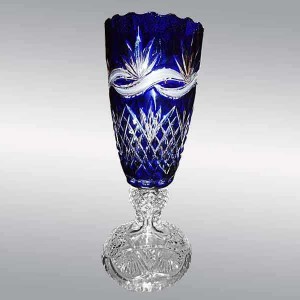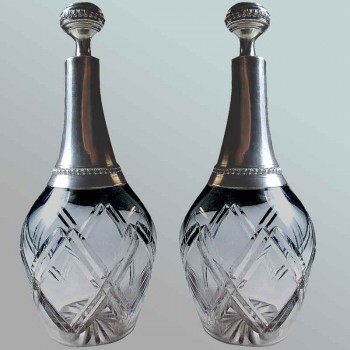Crystal Saint Louis
From the glassware of Münzthal to the Royal glassware of Saint-Louis (1586-1781)
Long before St. Louis belonged to the very closed circle of the crystal, the glass was already king in the land of Bitche. This remote region of the northern Vosges, with its immense forest and spectacular sandstone escarpments, indeed offers all the ingredients for the mysterious marriage of sand and fire, the origin of the glass.
Thus, from the Gallo-Roman period until the middle of the seventeenth century, a dozen glass works were established at the edge of the forest, near the great Commercial road that connects Italy with Flanders. The men and the techniques exchange between Murano and Bohemia to develop the beginnings of industry. It is necessary to wait 1586 and the foundation of the glassware of Münzthal, ancestor of Saint-Louis, to write a new page of the history of glass in the country of Bitche.
The glassware develops for a few decades but does not survive the chaotic European context of the time. For almost two hundred years, Bitche is a strategic issue in a Europe that is torn apart. It is the largest area among the counties of the House of Lorraine, a border town fortified by Vauban, which alone means the limit of France to the east. The old glassware of Münzthal does not survive the ravages of the Thirty Years War (1618-1648).
In 1766, when the Duchy of Lorraine was attached to the kingdom, a new factory was recreated at the site of the former Münzthal glassware. The following year, in 1767, Louis XV authorized by an order of the Council of State, confirmed by letters patent, the Revival of the old glassware and gives it the title "Royal Glass of St. Louis" in remembrance of Louis IX. The "Royale" stamp distinguishing the best from the country's know-how, Saint-Louis quickly became a flagship of the French economy. Supported by the king, its development of an extraordinary magnitude for the time, allows around it the revival of glass factories then disappeared.





